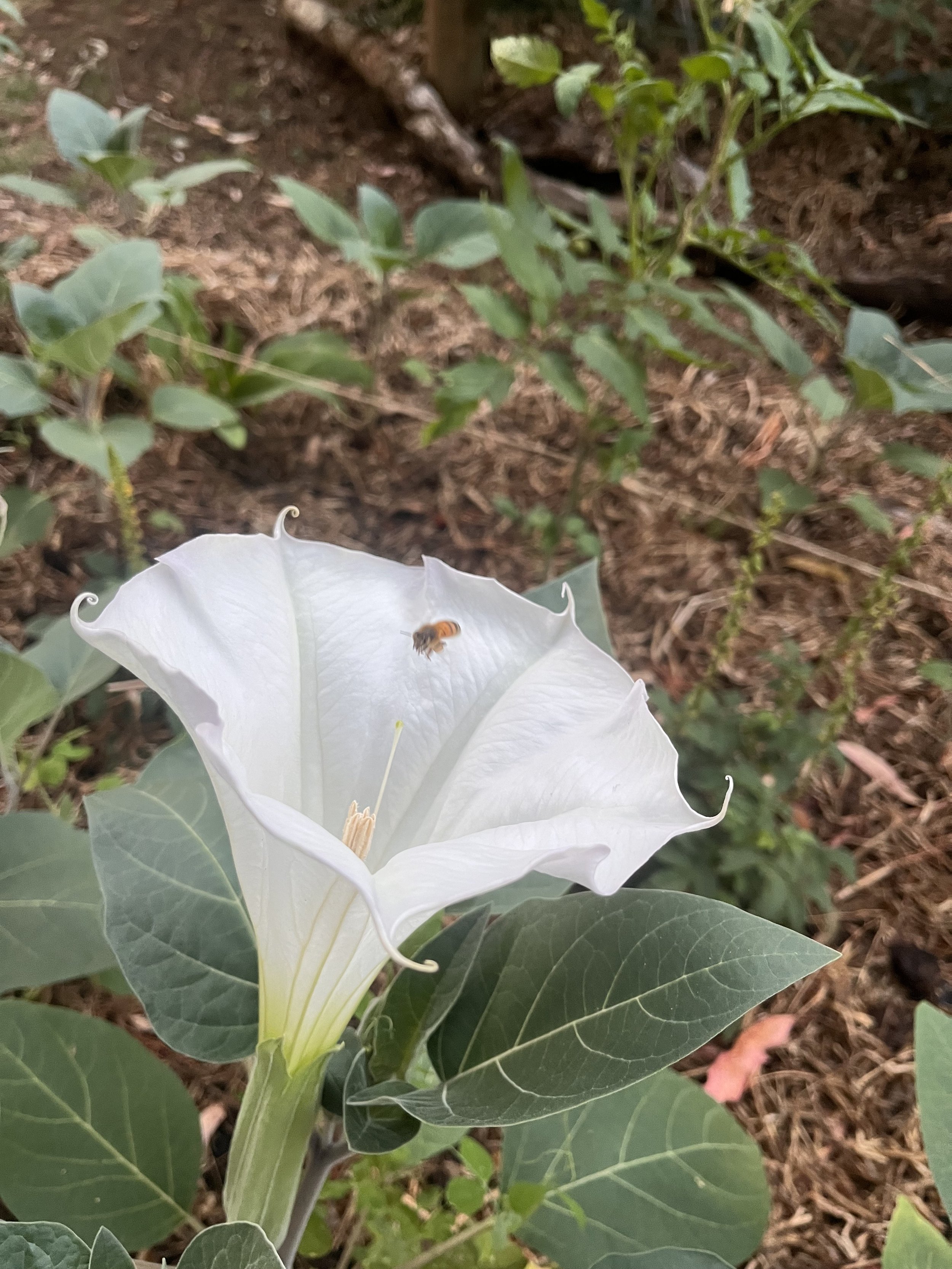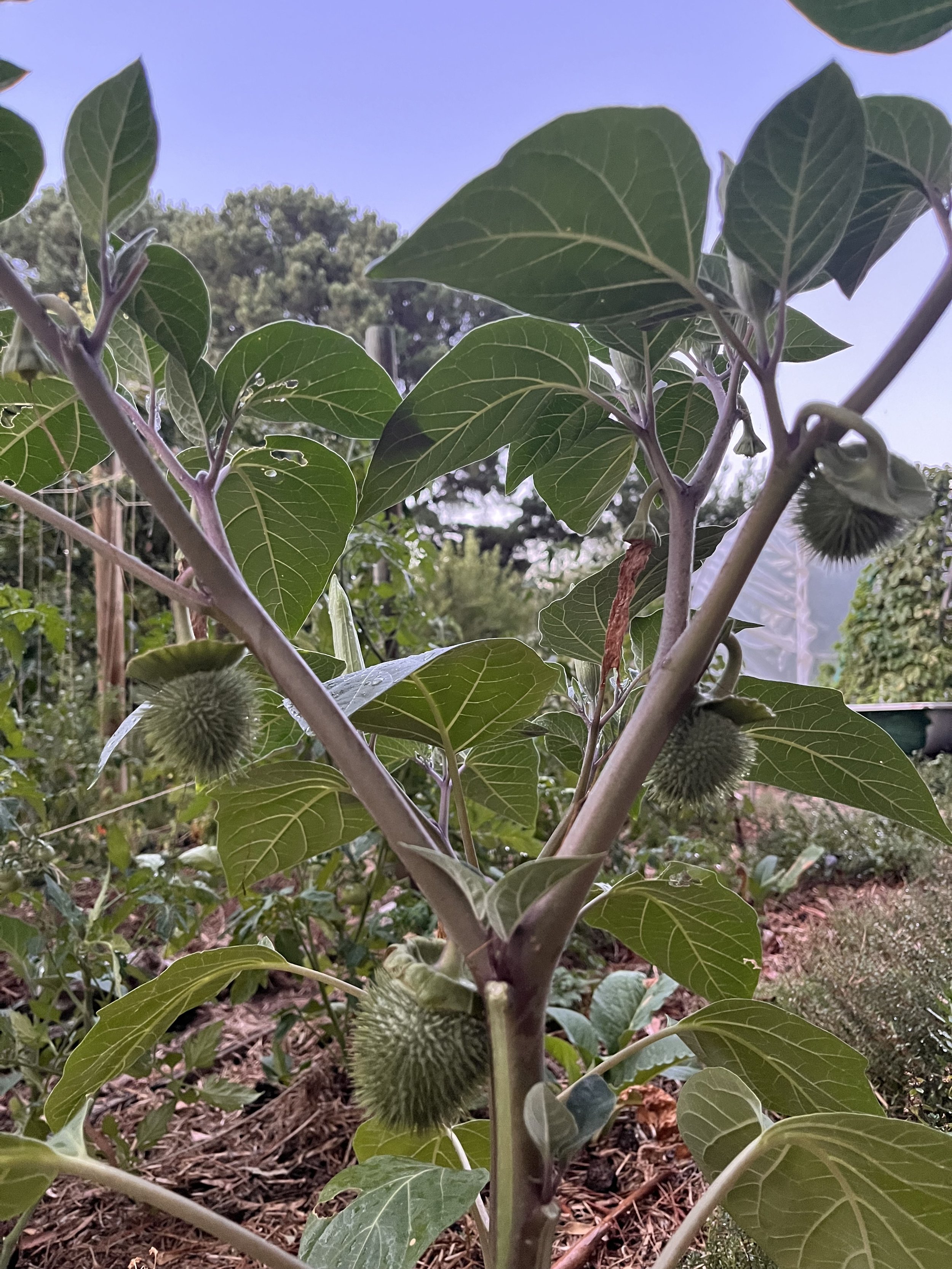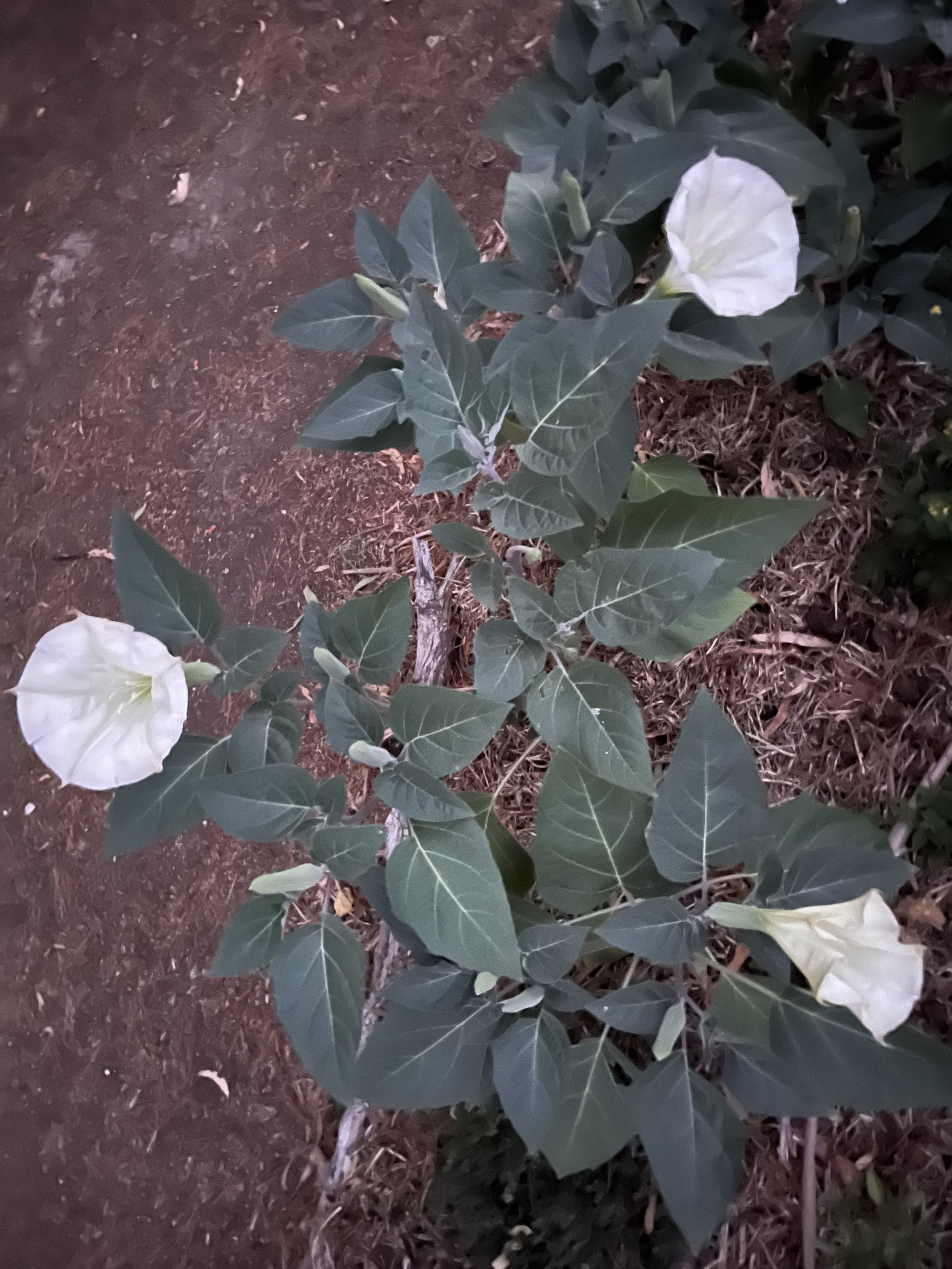 Image 1 of 4
Image 1 of 4

 Image 2 of 4
Image 2 of 4

 Image 3 of 4
Image 3 of 4

 Image 4 of 4
Image 4 of 4





Datura Seeds
Datura (Datura inoxia)
Description:
Datura, ‘Thorn Apple’ or ‘Toloache’ (Datura inoxia), is a mostly night-blooming perennial shrub belonging to the Solanaecea (Nightshade) family. Several varieties of datura have can be found across the globe, often self-seeding in abandoned rubbish piles and barren lots thereby gaining an invasive reputation due to their extremely adaptable nature to variable ecological conditions.
This species of datura is reportedly the most significant of all the thorn apples in regard to its chemical properties and significant role in human civilisations since around 1250 B.C.E. Excavations of ancient ceremonial sites of the ‘Zuñi Pueblo’ peoples of America’s southwest, showed evidence of them using the seeds for ritual purposes.
Datura is more often known for its toxic reputation, causing insanity and employment for malicious use by sorcerers or brujas. Many practitioners believe datura to be especially dangerous because it gives the users power indiscriminately. The Aztecs supposedly referred to it by the Nahuatl names toloatzin and toloaxihuitl, meaning "the plant with the nodding head," and utilised it for therapeutic purposes, such as poultices for wounds due to its pain-relieving properties.
The Zuñi believe that the plant belongs to the Rain Priest Fraternity and only its members may collect its roots. It is said these priests put the powdered roots into their eyes to commune with the ‘Feathered Kingdom’ at night, and the roots were chewed to ask the dead to mediate with the spirits for rain.
Although written evidence is limited, there are some reports of various Nations using Datura inoxia for deadening pain in minor surgical operations, bone-setting, and cleaning wounds.
Today, some indigenous Mexicans still use datura for hallucinogenic, medicinal, and aphrodisiac purposes, potentially infused into alcoholic beverages such as pulque, tesguino and mescal. However rightly so, datura is ultimately looked upon with respect, timidity, and/or disdain with many believing it has an intimate connection to the lower realms, or dark practices that may appear eerie to some.
CAUTION: It is crucial to note that every part of datura is considered to be toxic and should be handled with care. Avoid ingestion. Keep it away from children and pets.
Growing Conditions:
Climate: warm, arid, semi-arid to cool-temperate climates, preferring regions that experience relatively dry summers and cool winters; somewhat drought tolerant once established; susceptible to frost.
Position: prefers full sun but will still do well in a spot with dappled shade in the afternoon.
Soil: thrives in well-draining, sandy, mesic soil (cactus mix works well); prefers alkaline, poorly to moderately-fertile soils.
Water: requires moderate watering; avoid overwatering, as excessive moisture can lead to root rot and other issues; allow the topsoil to dry slightly between watering.
Spacing: allow approximately 60 - 90cm of space between each plant to ensure proper air circulation and prevent overcrowding if growing in the ground.
Propagation tips: scarify or nick seed coating & soak in warm water overnight before sowing (some people use willow shoot tea or GA3 to speed up germination); sow seeds in the spring and barely cover with soil, tamping the soil securely; water after sowing keeping the soil warm (21 - 24degC), allowing the soil to dry out between watering; germination can take a few weeks; transplant seedlings once they have developed their true leaves.
20 seeds per pack
Datura (Datura inoxia)
Description:
Datura, ‘Thorn Apple’ or ‘Toloache’ (Datura inoxia), is a mostly night-blooming perennial shrub belonging to the Solanaecea (Nightshade) family. Several varieties of datura have can be found across the globe, often self-seeding in abandoned rubbish piles and barren lots thereby gaining an invasive reputation due to their extremely adaptable nature to variable ecological conditions.
This species of datura is reportedly the most significant of all the thorn apples in regard to its chemical properties and significant role in human civilisations since around 1250 B.C.E. Excavations of ancient ceremonial sites of the ‘Zuñi Pueblo’ peoples of America’s southwest, showed evidence of them using the seeds for ritual purposes.
Datura is more often known for its toxic reputation, causing insanity and employment for malicious use by sorcerers or brujas. Many practitioners believe datura to be especially dangerous because it gives the users power indiscriminately. The Aztecs supposedly referred to it by the Nahuatl names toloatzin and toloaxihuitl, meaning "the plant with the nodding head," and utilised it for therapeutic purposes, such as poultices for wounds due to its pain-relieving properties.
The Zuñi believe that the plant belongs to the Rain Priest Fraternity and only its members may collect its roots. It is said these priests put the powdered roots into their eyes to commune with the ‘Feathered Kingdom’ at night, and the roots were chewed to ask the dead to mediate with the spirits for rain.
Although written evidence is limited, there are some reports of various Nations using Datura inoxia for deadening pain in minor surgical operations, bone-setting, and cleaning wounds.
Today, some indigenous Mexicans still use datura for hallucinogenic, medicinal, and aphrodisiac purposes, potentially infused into alcoholic beverages such as pulque, tesguino and mescal. However rightly so, datura is ultimately looked upon with respect, timidity, and/or disdain with many believing it has an intimate connection to the lower realms, or dark practices that may appear eerie to some.
CAUTION: It is crucial to note that every part of datura is considered to be toxic and should be handled with care. Avoid ingestion. Keep it away from children and pets.
Growing Conditions:
Climate: warm, arid, semi-arid to cool-temperate climates, preferring regions that experience relatively dry summers and cool winters; somewhat drought tolerant once established; susceptible to frost.
Position: prefers full sun but will still do well in a spot with dappled shade in the afternoon.
Soil: thrives in well-draining, sandy, mesic soil (cactus mix works well); prefers alkaline, poorly to moderately-fertile soils.
Water: requires moderate watering; avoid overwatering, as excessive moisture can lead to root rot and other issues; allow the topsoil to dry slightly between watering.
Spacing: allow approximately 60 - 90cm of space between each plant to ensure proper air circulation and prevent overcrowding if growing in the ground.
Propagation tips: scarify or nick seed coating & soak in warm water overnight before sowing (some people use willow shoot tea or GA3 to speed up germination); sow seeds in the spring and barely cover with soil, tamping the soil securely; water after sowing keeping the soil warm (21 - 24degC), allowing the soil to dry out between watering; germination can take a few weeks; transplant seedlings once they have developed their true leaves.
20 seeds per pack